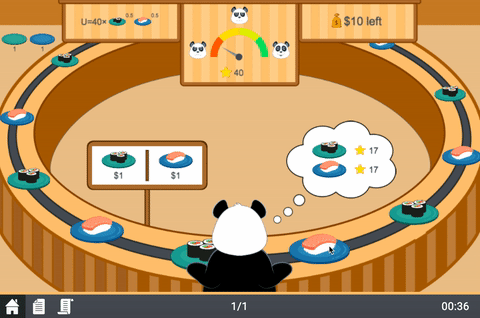Economics is about getting the most out of life. To demonstrate this simple point I would tell students we are going to make some assumptions. To illustrate the first assumption (non-satiation) I would show the video, “I Want It All” by Queen. We are going to assume that people are never satiated. In other words, they want it all!To illustrate the second assumption (decision makers are constrained) I would show another video, “You Can’t Always Get What You Want” by The Rolling Stones. Our bank accounts are not limitless. Scarcity is real and it necessitates trade-offs. We may want it all but we have to make hard choices because we’re operating within constraints.Finally, I draft students to participate in an eating frenzy. Sometimes I’ll go healthy like when the students eat bananas and other times students might eat less healthy options like honey buns. Before the eating commences I tell them they need to write down how they felt/how much they enjoyed the consumption of that item (in dollar value). Then we read aloud the sometimes hilarious reports. These written responses always show how student enjoyment declines with each successive unit consumed. With these basic assumptions we get some important predictions: the ratio of the marginal utility of a good and its price (you can think of this as a “bang for your buck” metric) should be equalized across goods the consumer cares about.This weekend we update our server and next week you will be able to access a new MobLab game called Consumer Choice: Cobb-Douglas. In this game, students have a set budget and must choose between eating tuna and salmon rolls, which have different respective prices. The students can see how many points (i.e. how much enjoyment) each additional tuna or salmon roll provides. Playing over several rounds students can start to figure out that because of diminishing marginal utility it is better to use their scarce dollars to consume the roll that brings them the most marginal utility. It’s a fun way to teach a tough concept. The Consumer Choice game includes eight possible variations that involve manipulation of the budget constraint and Cobb-Douglas preference parameters . Each variation is designed to teach certain aspects of maximization with Cobb Douglas functions like
The Consumer Choice game includes eight possible variations that involve manipulation of the budget constraint and Cobb-Douglas preference parameters . Each variation is designed to teach certain aspects of maximization with Cobb Douglas functions likeHow the optimal bundle responds to price and income changes The idea that a sushi roll's optimal budget share is equal to the ratio of it's exponent to the sum of all exponents That monotonic transformations do not impact the optimal consumption bundle. Why all these different manipulations? As Nobel Laureate James Buchanan used to tell his class, "It takes varied iterations to force alien concepts upon reluctant minds." We believe these games combined with a standard formal presentation will help consumer theory stick with students.Overall, we're excited to introduce this game as a tool for professors teaching consumer choice. Looking forward to seeing it applied in your intermediate microeconomics class!
 The Consumer Choice game includes eight possible variations that involve manipulation of the budget constraint and Cobb-Douglas preference parameters . Each variation is designed to teach certain aspects of maximization with Cobb Douglas functions like
The Consumer Choice game includes eight possible variations that involve manipulation of the budget constraint and Cobb-Douglas preference parameters . Each variation is designed to teach certain aspects of maximization with Cobb Douglas functions like
